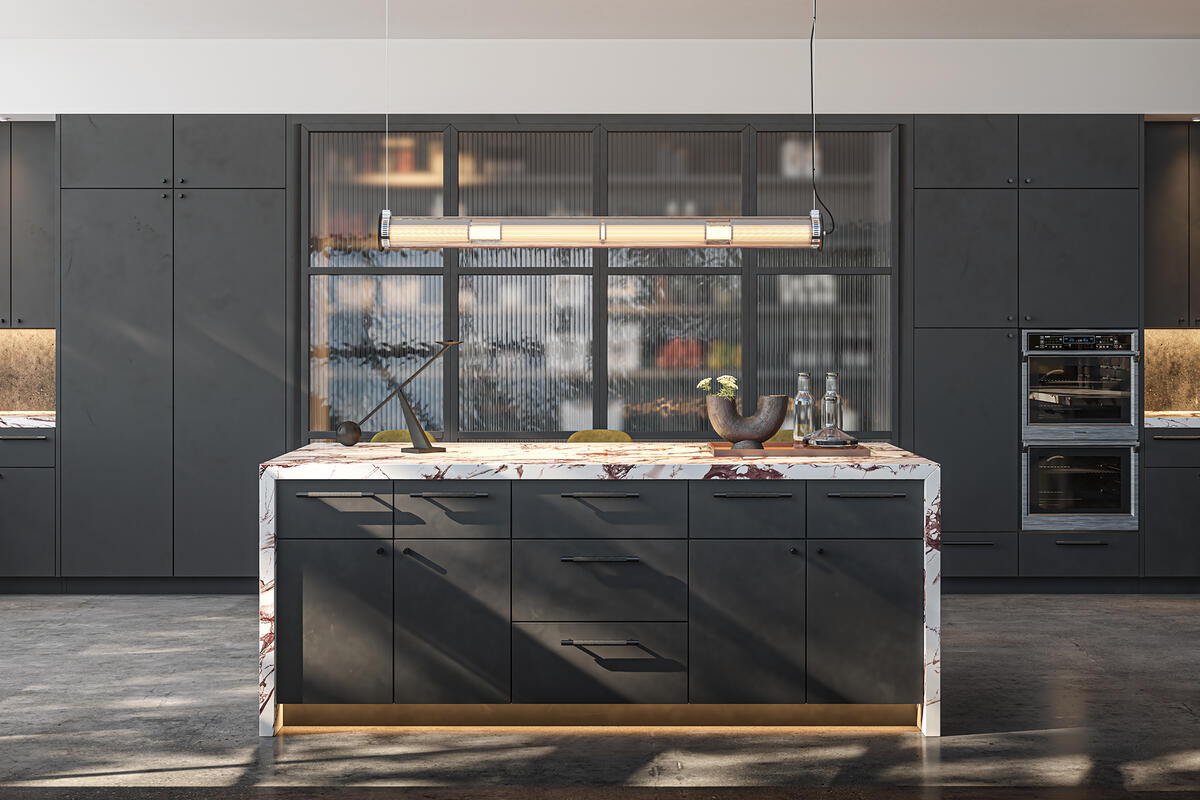Continuing the expansion of its suite of online design services, Lightology, the Chicago-based locus of all things lighting and many things home furnishings, has just soft-launched its latest tool: 3D virtual tours. And this time, with a Superman-like ability to capture multistory buildings in a single scan, the company has set its sights on residential remodel projects and the real estate market.
“Fully staged virtual home tours are version 3.0 of Lightology’s digital tools. By allowing customers to ‘walk through’ a whole space comprising multiple rooms and products, they can immerse themselves in an entire project,” says Mark Thiel, the company’s marketing director. “The tool is much more expansive.”
Expansive, certainly. But for the tech-averse who might find the idea of virtually designing a multilevel, multipurpose property intimidating, the process is still surprisingly straightforward. First, the physical space is scanned, either by a liaison provided by Lightology or by the client themselves using an app. In consultation with the client, Lightology’s team then digitally stages the space with not only lighting but also wall colors, floor tile, kitchen appliances and more, sourced from both its own extensive product offerings and outside vendors. A link connects the client to the finished tour, which they can experience on multiple compatible devices: mobile, desktop or via virtual reality headset.

“You navigate through not only a 360-degree space but a three-dimensional model,” says Lightology’s digital innovations manager Arielle Shingles. “Wearing a virtual reality headset, you can walk through this all-encompassing digital environment and feel what your existing location would be like with all different lighting and furnishings.” Emphasizing the level of detail showcased in the virtual tours, and the flexibility to change it, she adds: “We can take things out, plug stuff in, switch furnishings. We’re providing a highly specified, completely renovated replication: a digital twin of the real-world space.”
The new 3D tours complement Lightology’s other virtual services, which include a View in Room tool that uses augmented reality to overlay a product in a space via a phone’s camera lens, and single-room rendering, which captures one room and presents the virtual redesign in a 2D image with baked-in lighting effects. To organize drafts or different versions produced using either of these tools, customers can access Lightology’s Projects platform.
“The AR is the go-to when you want to see what a table lamp looks like in the corner of your living room: Is it too big, too small, does the color complement the wallpaper? It helps you decide when you’re hemming and hawing over one or two products,” says Thiel. Once designers try the room-rendering function, he says, “they’re hooked,” and they quickly come to count on it to pitch individual room concepts to their clients. With the addition of 3D virtual tours, designers can now expand from that solitary room to every corner and closet of a building, adding all the elements that belong in it and, of course, their choice of Lightology’s chandeliers and pendants, sconces, recessed cans or the latest LED lighting systems and floor and table lamps, from global brands like Ferm Living, Flos, Gubi, Koncept and Moooi, to name just a few.
“It’s like you’re walking through your mood board,” says Thiel of the staged virtual tours. And for designers, who tend to approach a project holistically rather than lamp by lamp, what could be better?
When it comes to selling an entire development like a luxury condo building or retail outlet, a fully realized virtual tour offers a big value proposition, which is why Lightology predicts the tool will be embraced not just by designers, but also by architects and real estate professionals. “A 5,000-square-foot hotel versus a 1,500-square-foot studio, that’s a completely different scale,” says Shingles. “No matter the size, we will make the space look live-in ready and the process as effortless as possible for the client.” Real estate agents who already have a backlog of scanned listings for empty houses posted on their website just have to go to Lightology and “play interior designer for a couple of weeks” to create a virtual refresh, says Thiel.
In the not-too-distant future, Shingles envisions iterations of the tool that will allow users to experience a space at different times of day and with different types of illumination: morning sun, evening shade, cloudy afternoons. “We could probably bake multiple lighting views in to the virtual tour,” she says. Dynamic interaction, giving users the ability to brighten or dim individual lights as they take the tour, is another possibility—eventually.
“That,” says Thiel, “will be Lightology virtual services version 4.0.”
This story is a paid promotion and was created in partnership with Lightology.
Homepage photo: A kitchen rendering created using Lightology’s virtual reality platform | Courtesy of Lightology





























